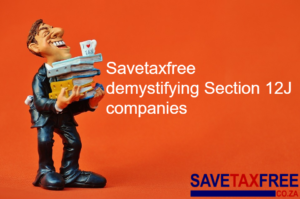New year, new savings
By Leya Mall | 14 November 2018
Welcome back readers, to the Tax-Saving South African, where I walk with you in your personal journey through a range of financial themes.
It’s almost that time of the year again where people take leave for the festive season, eat copious amounts of food, sign up for the gym and over-use the phrase “new year, new me”. Something new to also look forward to is the Financial Mail 2019 Guide to Tax-Free Savings, put together by savetaxfree.co.za, that comes out on 31 January.
Okay enough self-promotion (it’s a really fantastic guide to every tax-free savings account in the country). Earlier in the year we emphasised how important it is to start saving as soon as possible for a retirement annuity (RA).
Financial services company Alexander Forbes came out with some really scary stats recently. It says only 5.17% of people who retire from Alexander Forbes funds are able to maintain their standard of living. It’s estimated that people need 60%-80% of their salary to live comfortably.
In an ideal world, by the time you’ve retired you would have paid off your house, cars and given the kids a decent education. However, the reality is many people still have large debts to settle and are forced to go without the comforts and luxuries of a middle-class lifestyle.
Okay enough with the nightmare talk – here’s what you can do about it: use a TFSA to supplement your RA so you can still afford some of those everyday pleasures in life, despite the hip replacement. Here’s a sneak peek into what the 2019 Guide to Tax-Free Savings has to offer. It lists every TFSA on the market with important information such as risk levels, historic returns and costs.
In previous columns we’ve discussed ETFs, unit trusts and cash accounts, but there are a few other categories of TFSAs listed in the guide.
Cash savings accounts
Cash TFSAs are usually offered by banks and financial institutions. Some take the form of fixed deposits that face penalties for early redemption and some are call deposits which can be drawn down at any time with no penalty. The interest earned on the cash investment is tax-free. All of these accounts are considered to be low risk because the returns are guaranteed by the institutions offering them.
Unit trusts
Unit trusts are a popular way to invest in TFSAs and give investors access to a wide variety of investment strategies. Generally, unit trusts are actively managed, with the investment manager making decisions between different assets. This means they are usually more expensive than passive funds such as exchange-traded funds. Unit trusts lend themselves to the full range of risk levels. Most funds allow for regular contributions or once-off investments.
Linked investment service providers (Lisps)
Unit trusts can be invested in either directly or through two types of grouped funds: a linked investment service provider (Lisp) platform, or a wrapper-type fund. Lisps provide access to a wide range of unit trusts from various issuers, through one platform, whereas unit trusts are available directly only if the provider has created a tax-free account facility. Lisps allow you to invest in any unit trust and trade between them all within a single tax-free account.
Tax-free wrapper funds are similar to Lisps in that they offer a range of underlying unit trusts in which to invest, but usually only from the service provider.
Exchange-traded funds (ETFs)
There are two ways of investing in ETFS for a TFSA: directly with the ETF provider or via a stockbroker that allows you to buy or sell ETFs within a tax-free stockbroking account. These appear to be fantastic investment vehicles for novice investors. First, they’re passively managed, which means all the investments are pre-determined. The investment decisions are not made by a fund manager earning a fat salary and charging you a fortune to do so.
Life insurance policies
A popular form of TFSA is the life insurance policy and this usually allows you to choose an underlying set of unit trust funds in which to invest. The advantage of a life policy structure is that it is simpler to manage in the event of your death – the named beneficiaries receive the proceeds relatively quickly and it does not form part of your estate for the calculation of executor fees. You are, however, able to contribute and withdraw from the fund just like for unit trusts. Life policies are often sold by financial advisors. We shall expand more on this exciting investment in a future column.
What’s next?
Assess the different options – which will be covered in more detail in the FM guide on 25 January (okay – that was the last bit of self-promotion, this time I promise). Decide which is the best category of TFSA investment that suits your needs. Getting advice from a financial adviser is important.
And remember – if you haven’t invested in a TFSA this year, you can “double up”: invest the full amount before the end of the tax year on 28 February 2019 then invest the same amount again in March.
Continue following this series to become a wiser tax-saving South African!






